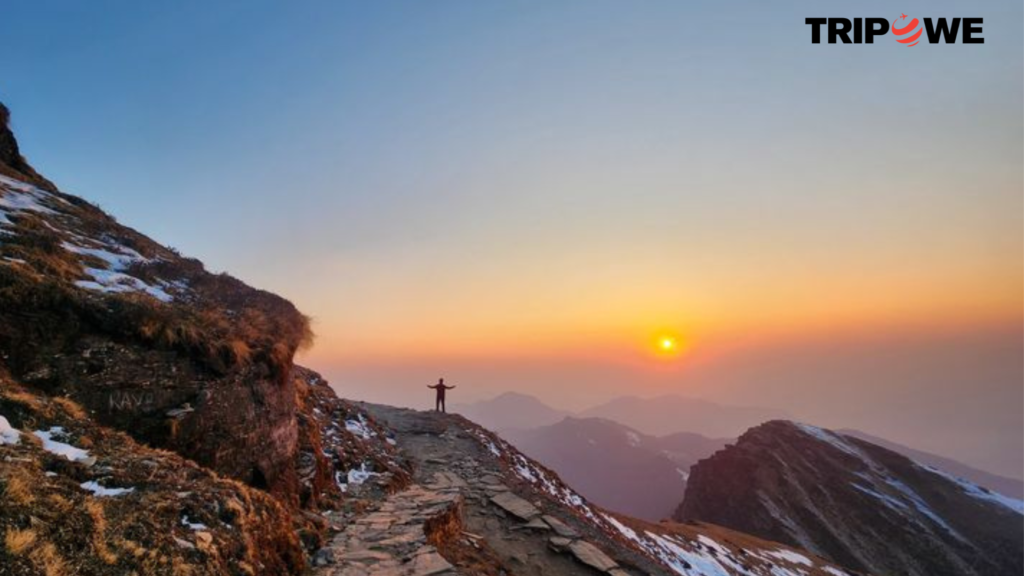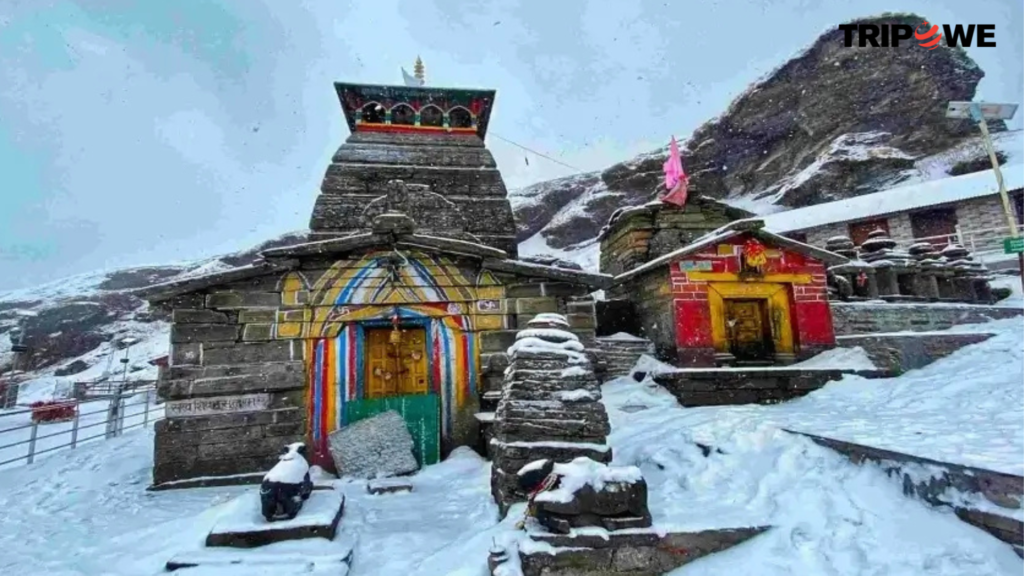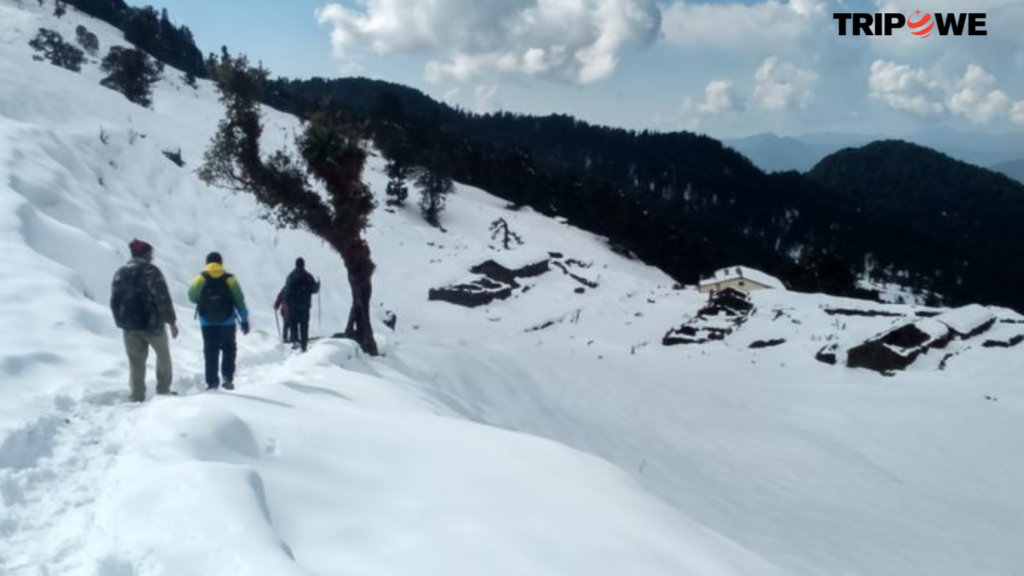Last updated on November 23rd, 2024 at 06:25 am
Tungnath Temple: Highest height of Shiva temple in the world.
Tungnath Temple, ensconced in the lofty heights of the Garhwal Himalayas, is a source of spirituality and peace. Tungnath, located at 3,680 meters (12,073 ft) in Uttarakhand’s Rudraprayag district, is the world’s tallest Shiva temple and one of the famous Panch Kedar shrines. This old temple is not just an important religious monument, but also a haven for hikers and environment enthusiasts.
In this blog, we will study the temple’s history, religious significance, hiking route, best time to visit, and travel recommendations, providing a comprehensive tour to this divine site.
History and Mythology of Tungnath
Tungnath, which means “Lord of the Peaks,” is steeped in mythology. According to mythology, the temple is one of five temples dedicated to Lord Shiva known as the Panch Kedar. The story dates back to the Mahabharata, when the Pandavas asked Lord Shiva to forgive them for their misdeeds committed during the Kurukshetra conflict. Lord Shiva, unable to forgive them, disguised himself as a bull and hid in the Himalayas.
Lord Shiva’s arms are supposed to have manifested in Tungnath, while the rest of his body appeared at the other Panch Kedar temples. Built more than a thousand years ago, the temple emits an aura of spirituality and ancient architectural elegance, making it a revered location for devotees.
Trekking details:
Distance: 4 kilometers (one-way).
Duration: 2–3 hours
Difficulty: Easy to Moderate.
Altitude increase: from 2,680 meters (Chopta) to 3,680 meters (Tungnath).
The well-marked track leads through lush meadows, deep woodlands, and breathtaking views of snowcapped summits. Trekkers are met with panoramic vistas of the Chaukhamba, Nanda Devi, Trishul, and Kedarnath ranges. The chirping of birds and the cold mountain breeze create a peaceful atmosphere, making the hike a rejuvenating experience.
Chandrashila Peak, The Summit of Serenity
 For those desiring more adventure, the walk can be continued to Chandrashila Peak, which is 1.5 kilometers beyond Tungnath Temple. At an elevation of 4,000 meters, Chandrashila provides a 360-degree vista of the Himalayan peaks and is revered as the location where Lord Rama meditated after killing Ravana.
For those desiring more adventure, the walk can be continued to Chandrashila Peak, which is 1.5 kilometers beyond Tungnath Temple. At an elevation of 4,000 meters, Chandrashila provides a 360-degree vista of the Himalayan peaks and is revered as the location where Lord Rama meditated after killing Ravana.
The morning vista from Chandrashila is breathtaking, with golden hues illuminating the snow-capped peaks—a scene that will live in memory forever.
Best time to visit Tungnath
 Tungnath is best visited in the summer (April to June) or after the rainy season (September to November).
Tungnath is best visited in the summer (April to June) or after the rainy season (September to November).
Summer (April-June): The temperature is lovely, and the trails are lined with blossoming rhododendrons.
Monsoon season (July to August): Although the terrain becomes lush and beautiful, severe rainfall can make walking hazardous.
Autumn (September to November): Clear skies and cool temperatures make it a popular season for hikers and pilgrims.
Winter (December to March): The temple is closed, but adventurers can hike to Snow Tungnath and explore the magnificent snow-covered trails.
How to Reach Tungnath
 By Air:
By Air:
The nearest airport is Jolly Grant Airport in Dehradun, around 200 kilometers from Chopta. From the airport, you can take a taxi or a bus to Chopta.
By Train:
The nearest railway station is Haridwar, which is about 225 kilometers away. There are cabs and buses available from Haridwar to Chopta.
By road:
Chopta is easily accessible by road to large cities like as Rishikesh, Haridwar, and Dehradun. Regular buses and private taxis serve Chopta.
Travel tips

Acclimatize: Spend a day in Chopta to adjust to the altitude, especially if you’re walking to Chandrashila.
Packing essentials include warm clothing, good walking shoes, water bottles, energy snacks, and a first-aid kit.
Hire a Guide: While the trail is well-marked, hiring a guide can improve your experience and keep you safe.
Begin your trip early in the morning to appreciate the peaceful surroundings and return before dusk.
Respect the environment by keeping the trail clean and not littering. Please respect the temple’s sanctity and local customs.
Accommodation and Food
Chopta provides a variety of lodging alternatives, from low-cost guesthouses to environmentally friendly campsites. Many lodges provide simple but wonderful native dishes like pahadi dal, rajma, and roti. During the hike, little dhabas serve tea, snacks, and light meals.
The Beauty Beyond Spirituality
While Tungnath Temple is a spiritual destination, the surrounding natural beauty is as intriguing. The trail is visually stunning, with flowering rhododendrons, green meadows, and clear streams. Photographers, bird watchers, and environment lovers will have several opportunity to capture the essence of the Himalayas.
Conclusion
Tungnath Temple is more than a site of prayer; it is a voyage of self-discovery, spirituality, and connection to nature. Tungnath offers a rejuvenating experience for the body, mind, and spirit, whether you’re a devotee seeking Lord Shiva’s blessings or a trekker looking for the excitement of conquering Himalayan paths.
So, pack your bags, lace up your trekking shoes, and set out on this magnificent expedition to Lord Shiva’s home, where the peaks echo devotional chanting and each step brings you closer to the sky. Harhar Mahadev!




